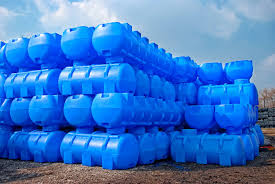Rotational creating, or rotomolding, is definitely an adaptable plus cost-effective producing practice utilised to develop hollowed out plastic-type parts. It is particularly chosen regarding creating difficult, smooth things along with large-scale parts in numerous market sectors, as well as vehicle, boat, and also buyer goods.
How Rotomolding Is effective
A Rotational Molding course of action begins with the creation of powdered plastic liquid plastic resin right into a two-part mold. The actual form, normally constructed from light weight aluminum or perhaps precious metal, is excited although remaining frequently rotated along a couple of perpendicular axes. This specific turn means that the actual melted vinyl clothes the medial side surface of the mold uniformly. Because mold cools down, the plastic-type material solidifies, making a empty spend the reliable walls thickness.
Aspects of Rotomolding
Difficult Shapes: Rotomolding enables the production of complicated and sophisticated patterns that are often challenging to attain with plastic making techniques. The ability to shape with multiple axes encourages the development of significant, useless sections by using diverse geometries.
Easy Layout: One of the leading benefits of rotomolding is actually the creation of seamless, stress-free parts. Unlike shot molding, which will deliver weld strains along with stitches, rotomolding provides a simple, single-piece construction.
Cost-Effective: Intended for method for you to substantial manufacturing flows, rotomolding is monetarily advantageous. This shapes, which are generally inexpensive than these utilized in injection creating or maybe knock back creating, can be employed regularly, defining it as the cost-effective option for producing durable, high-quality products.
Materials Overall flexibility: Rotomolding can cater to a number of thermoplastic elements, which includes polyethylene, polypropylene, in addition to PVC. This particular overall flexibility makes it possible for manufacturers to pick out materials in accordance with the precise overall performance demands associated with the merchandise, including impression weight, UV stability, or chemical type resistance.
Low Spend Manufacturing: This process creates minimum waste material when compared along with other methods. The particular powder vinyl utilized is actually entirely made use of, and then for any extra materials is frequently remade and reused.
Applying Rotomolding
Rotomolding is utilized all over assorted market sectors with regard to a range of applications. While in the vehicle marketplace, it generates pieces like energy fish tanks plus defensive covers. In the ocean segment, it creates sturdy factors pertaining to boats as well as watercraft. The buyer items field gains advantage from rotomolding throughout goods just like coolers, bins, and recreation space equipment.
Summary
Rotomolding stands apart pertaining to its ability to generate high-quality, delicate, and durable plastic-type sections with a cost-effective approach. Their mobility, marginal waste, plus seamless engineering morph it into a precious manufacturing approach with regard to numerous applications. Whether you’ll be in automotive, ocean, or even shopper products, knowing the benefits of rotomolding will let you make use of fractional laser treatments effectively.

